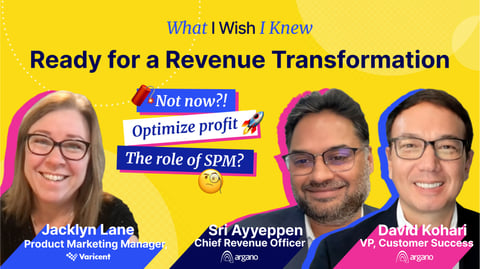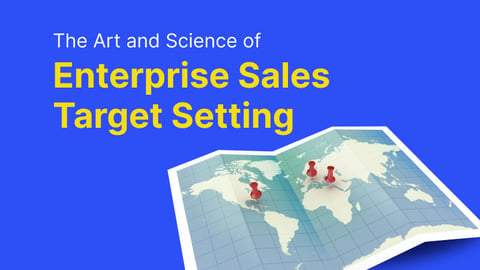Businesses perform at their best when most closely aligned with their customer’s needs. The more they understand their customers’ hopes and ambitions, their issues and challenges, how they buy, and their buying criteria, the more successful they’ll be in creating compelling products and services that their customers will want to buy.
Companies invest billions of dollars in market research and data analytics in finding that new edge that they can use to create new features and enhancements that increase revenues, grow market share, and increase their share price.
A company’s sales team will have a significant role in capturing the total value of all this investment. To be fully effective, they’ll also need to be fully aligned with how their customers buy, as they understand, in detail, the issues and drivers of their customers and prospects. They can then fully align their products and services in ways that a customer will find unique and compelling.
However, it’s obvious from the regular stream of missed earnings announcements and the regular turnover of salespeople and their managers, that many companies struggle to align their sales systems and process fully with their customers. This impacts the growth of the business and the success or failure of new products.
Let’s explore why this might happen and what you can do to ensure that your sales systems and processes align with how your customers buy.
- Why Can Good Sales Teams Miss Target?
- Designing a Commission Model
- The Pitfalls of Sales Commission Planning
- Diversifying Sales Teams for a Diverse Market
- Building the Ideal Commission Model
Why Can Good Sales Teams Miss Target?
We’ve worked with a broad array of different sales organizations, and we believe that effective sales teams can become misaligned with the customers and prospects for two main reasons:
- The market changes faster than the sales structure does.
In a world of constant and rapid technological change, offerings that disrupt your market – and your sales plan – can emerge swiftly, forcing companies to react to the changing circumstances. Your sales plans may need to be adapted, at speed, in response.
- A single sales model is used to serve highly diverse customers and prospects.
The structure of a sales team, together with its commission structure and quota structure, impacts how it engages with its target market. In our experience, a company that creates a sales structure and a commission and quota plan reflecting that customers in different geographies, segments, and sizes buy differently, will be more successful than those that try and impose a one-size-fits-all approach on their customers and prospects.
Let’s look at how companies typically develop their commission plans and some of the pitfalls they encounter when their goals need to change alongside the market.
Then we can look at how to get it right - the first time and every time - by using big data analytics and management capabilities to help you better manage change and align your sales team and your customers.
Help your sales reps make the most of their compensation plans with this insightful webinar, 100% OTE: Using Your Comp Plan to Hit Your Number.
Designing a Commission Model
The classic approach to designing a commission plan will combine a mix of financial incentives and business metrics to develop a framework that rewards focus, effort, and results that ‘make it pay to be a winner’.
The variables might include:
Base Pay and Variable Pay
Depending on the nature of the product and the complexity of the sales process, the base pay and variable pay components of a package will vary. Typically, there’s a 50/50 mix in B2B sales compensation plans, but this may change with shorter sales cycles, for example, in real estate or travel. For customer-facing, non-sales professionals, such as pre-sales engineers and consultants, this will likely increase to an 80/20 base/variable split.
Commission Models and Bonus Models
Depending on the role, variable pay components will be commission-based incentives or bonus payments.
Salespeople – and their managers – typically benefit from commission payouts on transactions that they close. The incentive is that the more they close, the more they earn.
Bonus models are payouts based on activity-based metrics. They’re aimed at account development reps or pre-sales consultants, who need to be incentivized to focus on customer needs, but who aren’t responsible for closing the final deal.
Accelerators and Kickers
Commission models often feature accelerators and kickers that generally pay out additional payments to salespeople. Examples include payments for closing deals in the first half of the year rather than the second half or commission overpayments once a salesperson has achieved quota.
Other Incentives
Sales compensation models may also feature additional benefits such as ‘Presidents Club’ or team days out and other competitions to keep things lively and the whole sales team engaged.
Quota Management
The other side of the compensation management equation is the quota planning and management process. Quota management is crucial, and it can be the secret sauce that makes a sales team out-perform its peers. It can also be where everything begins to unravel for a business.
While these fundamentals aren’t a revelation to anyone, it’s worth exploring where things can begin to go wrong.
The Pitfalls of Sales Commission Planning
A handful of assumptions can undermine the ideal sales compensation planning process:
1. Nothing’s Really Changed from Last Year
Some sales managers might assume that nothing changes much between one sales year and the next, which might be reasonable in some circumstances. The challenge comes when you make that assumption every year. By year 3, your sales commission model might be significantly different from the market’s needs. Your commission model might be driving the wrong behavior, with your salespeople closing at the wrong time as customers change their buying model.
2. The Market’s Changing, But We Can Handle it
Another assumption is recognizing that markets and buyer behavior change, but you can accommodate that within your existing commission plan. That may be the case, but equally, it may not. For example, if you’ve been successful at selling to large corporates but are now finding growth coming from smaller businesses, engaging with them in the same way – with a similar commission and quota model – will unlikely be successful, as they buy differently from their larger peers. Again, the wrong commission model will drive bad behavior, impacting the business’s success.
3. We Can Change the Commission Plan Mid-year
It’s possible to change and adapt commission models mid-flight, perhaps with special promotions or incentives that your sales team will value. The challenge is how you design this to be effective and easily understood by the sales team and their managers. It also needs to complement the existing commission plan and avoid unintended consequences or conflicting incentives. Changing a commission plan mid-year can be done, but it can easily go wrong without the right tools and insights.
4. Our Commission Planning Tool Isn’t That Sophisticated
A significant constraint for many organizations is their sales commission planning capability. There’ll be as many different approaches to commission planning as there are businesses. Some will use a spreadsheet, others will use dedicated toolsets, others will apply their previous experience, and others will use a mix of all these approaches. While this may work for a while, in time, your commission planning model may become a choke point in the business, holding it back rather than helping take it forward.
What are the implications for a business of these pitfalls?
Without a powerful commission planning model that uses real-world market data to inform it, sales leaders are likely to be condemned to creating sales commission and quota plans that are constantly one step behind its customers. The behavior of the commission models they create will antagonize customers, eventually with them saying at that final meeting, ‘You’ve changed, it’s time to move on.’
Diversifying Sales Teams for a Diverse Market
There are other reasons to think about implementing a best-in-class commission planning solution to align your sales team more effectively with your customers.
A significant challenge for any sales leadership team is working out the best structure and compensation for a sales team to service a large, diverse customer and prospect base. This is much more complex than people might appreciate at first glance.
What type of sales roles will likely exist in a business? Starting at the top, there is the VP Sales or Sales Director role, whose package will include a commission and a quota achievement variable. There may also be a stock option program they can benefit from and potentially some business development objectives.
Below that level will be the sales managers responsible for the day-to-day execution of the sales strategy. They, too, will likely have a base salary and a variable compensation model based on the quota achievement of their team. They may also be measured on the timeliness and accuracy of their quarterly sales forecast or incentivized on the signing of deals focused on specific products, services, or customers.
Lastly, account managers and product specialists are the feet on the street, closing business with customers, whether working in an office or a call center. Their pay has a base salary and a quota-based variable component depending on the role.
But let’s not forget the solid supporting cast in a sales team.
Companies often have business development reps whose job is to cultivate leads and opportunities, ready for the account managers to develop and close at the right time. They won’t close deals, but they’re a key part of the process and need to be properly and realistically incentivized.
There are also the pre-sales engineers and pre-sales consultants whose job is to understand the unique and technical aspects of a customer’s needs and help the account manager position their proposal to maximum effect. They may well demo the more complex technical capabilities of an offering, too.
Last, and by no means least, are the sales operations teams that develop and manage commission plans and ensure that the right bonuses and commissions are made to the right people at the right time. In some businesses, they’ll be responsible for market analytics and enhancing a commission model. They’ll typically receive a bonus based on the overall team performance.
Without too much effort, we’ve identified a handful of sales roles that need a different commission plan, quota plan, and bonus plan to make the sales function work at a basic level.
Now let’s add another level of complexity.
Many companies won’t sell just one product or service. They could have a portfolio of products and services available, some developed by themselves, some acquired, and some being resold from business partners.
This likely means that a company will target a range of sectors, segments, and demographics, each with a different range of problems they’re looking to solve and differing approaches to buying products and services.
The implication for a business is that if you have a one-size-fits-all engagement model shaped by a commission model that drives a certain type of behavior, you’re in danger of using enterprise-level sales tactics. This includes calling high and wide, paid proof of concepts, or offering large up-front volume discounts, for example - into a situation where your client needs more education, proof, and reassurance, often needed in small and medium-sized businesses. If you repeat these mistakes at scale across your whole sales force, you’re setting yourself up to fail.
Companies and people will buy differently. Large corporates may want to buy through a sizeable corporate agreement that features significant volume discounts. Medium-sized companies might want to buy from a company’s channel partners, and the smallest companies may wish to purchase online exclusively. There may even be a mix of buying models in the same business, which needs to be accommodated in a commission plan. The rapid growth of subscription models for buying a range of services – software, entertainment, cars, and more – adds another level of complexity.
This mix of sales roles and different buying models across different business sizes and sectors means that a VP of Sales and their operations team aren’t looking at managing just six or seven sales roles - there may be a need to manage commission and quota plans for five times that number.
At this point, relying on a spreadsheet and past experience to create a commission model starts to fall apart.
Building the Ideal Commission Model
So, how do you best create a commission and quota model that’s achievable for the business while also accommodating the different types of customers – by size and sector – that you need to manage and engage with?
Part of the answer lies in using data to provide a deep understanding of your target markets. Having a deep understanding of the opportunity in a company (and its potentially many subsidiaries), a sector, or a segment, will help you accurately size quotas and ensure that the appropriate level of a scarce resource is focused at the right area for optimal results.
Deep data analytics – leveraging data consolidated from multiple sources – can also show you the buying process for long-established relationships and newer prospects. Longer-established relationships typically need relationship management expertise to maximize the use of your product and services and ideally find new opportunities. New prospects will need more support in understanding your proposition in detail before opting for a trial or demo. You may want to consider different quota and commission models for these examples based on the potential revenue opportunity, the complexity of the sales process, and the effort required to prove your business case.
When you consider the effort of doing this at scale across hundreds or thousands of customers across dozens of sectors and segments, you can see the value of deep data analytics and consolidated data sets combined with automation. These tools can help you allocate the right people and resources at the right time, to maximum effect, year after year. This enables a sophisticated model that’s easy to manage by the sales leadership and sales operations team and easy to understand by the sales team.
Read our e-book, Set Sales Goals That Maximize Revenue Potential to further your comp plan strategies and help you achieve your revenue goals.




